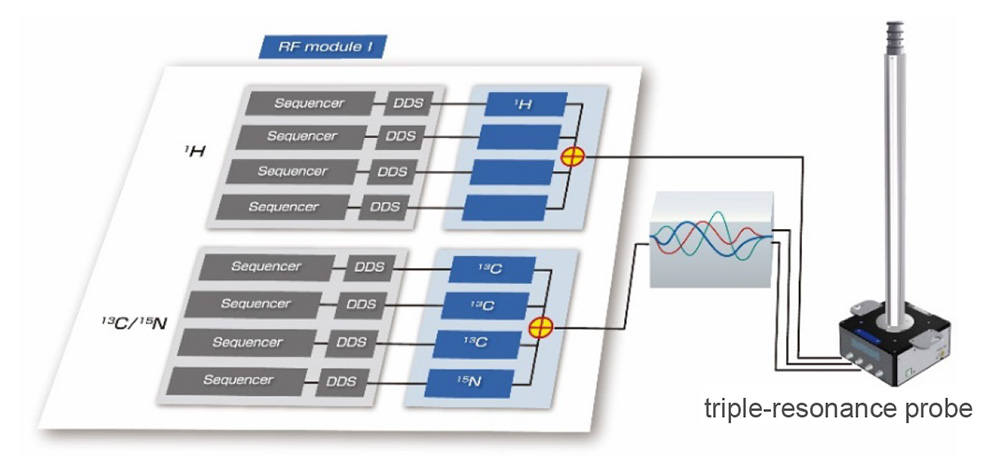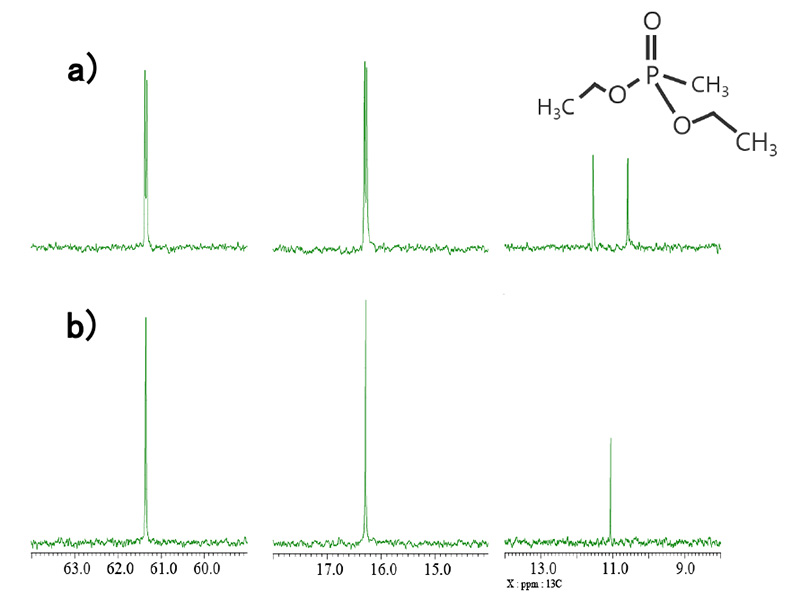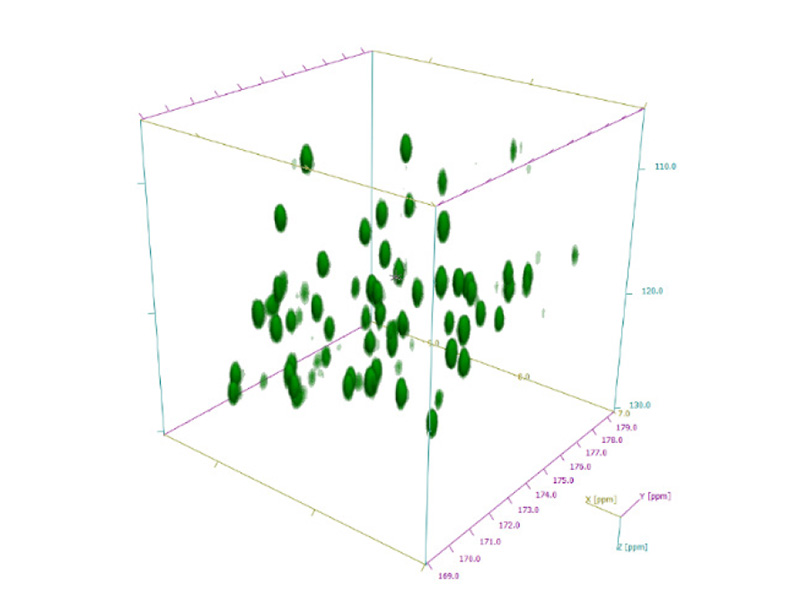Multiple-Resonance Measurements on ECZ Luminous_NM220004E
A standard NMR system has one high-frequency channel and one low-frequency channel. The total of two radiofrequency channels allows us to perform single-resonance and double-resonance experiments. However, sometimes a higher number of channels is desirable. A third channel would allow us to decouple additional nuclide simultaneously, for example. Traditionally, this requires adding one more radiofrequency channel. To make multiple-resonance experiments feasible on two-channel NMR spectrometers, the ECZ Luminous has a new function called the Multi Frequency Drive System (MFDS). This unique function allows us, to simultaneously generate two frequencies from a single frequency channel and irradiate the sample. This means that if you have a triple-resonance probe, you can perform triple-resonance measurements without the need to expand the number of channels in your spectrometer.
Note: This functionality is available on ECZ spectrometers in the combination with the ROYALPROBE™ HFX. Two-channel ECZ spectrometers can irradiate 1H and 19F pulses simultaneously, but this is only limited to the high-frequency channel. The ECZ Luminous spectrometers with the MFDS function extend this approach to the low-frequency channel as well. This is shown in Fig. 1.

Fig. 1: Schematic diagram of the Multiple Frequency Drive System (MFDS)
Fig. 2 shows an example of 1H, 13C, and 31P triple resonance measurement when using an HCX triple-resonance probe. As shown in Fig 2 b), the doublets collapse into singlets by the simultaneous 1H and 31P decoupling. This increases sensitivity and makes the analysis of the spectrum easier. Fig. 3 shows an example of 1H, 13C and 15N triple-resonance measurement performed on a labeled protein using an HCN triple-resonance probe. Both triple-resonance measurements were performed on a standard 2-channel JNM-ECZL600G instrument. It is clear that the triple-resonance measurements were properly performed.
 Fig. 2: a) 13C{1H} and b) 13C{1H}{31P} spectra of diethylmethylphosphonate in CDCl3 by HCX probe
Fig. 2: a) 13C{1H} and b) 13C{1H}{31P} spectra of diethylmethylphosphonate in CDCl3 by HCX probe Fig. 3: 3D HNCOCO spectrum of 13C/15N labeled Ubiquitin in 90% H2O / 10% D2O by HCN probe
Fig. 3: 3D HNCOCO spectrum of 13C/15N labeled Ubiquitin in 90% H2O / 10% D2O by HCN probe